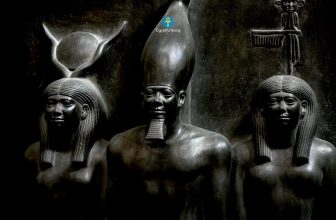Coptic Art – NMEC
As early as the reign of Augustus, Egypt had been linked to Christianity because of the Holy Family’s flight to Egypt when Herod I sought out the child in an attempt to kill him. Later, when Saint Mark the Evangelist came to Alexandria, Christianity spread among the Egyptians despite Roman oppression. Furthermore, Egypt had become the center of Christian monasticism when Saint Antony the Greco arrived.
Due to the name “Coptic” deriving from the ancient Egyptian word “Agbet,” which signifies flood and people of the land, Coptic art developed as pure folk art. It also leaned toward symbolism by incorporating numerous unique and foreign creative aspects from many ancient civilizations. Typical of Coptic art is flat faces with round eyes and thick dark brows, as well as foliate and geometric motifs on every available material from stones to pottery to wood to ivory and bone to metals like gold and silver. The artist also excelled in icon-painting on wood covered with plaster or linen in which he depicted the Christ, the Virgin Mary, and themes from the old annals of the church. He also painted on wood covered with gold leaf. Egyptian wall paintings produced in plaster layers with their vivid hues, which are among the rarest artistic specimens in the world, were also unique in tapestry technique because of their clashing colors and elaborate embellishments.
Stole

In the church, stoles are worn mostly by deacons, and this lovely one is embellished with depictions of several Saints as well as Arabic inscriptions.
the period between the years 1750 and 1800
Fragment of a tapestry

In ancient Egypt, the textile industry was highly regarded, and this beautiful piece may have been part of an elaborate robe or curtain covered with geometric designs and images from daily life, with a woman’s face prominently shown in the middle.
Artinoe / Linen – Wool / 6th – 7th century A.D.
Tapestry Fragment

One of the well-known Coptic motifs, which Muslim painters also enjoyed depicting, is a knight riding his horse as a tiger lurks behind him, maybe one of the hunter’s prey. There are some influences from Sasanian art in the scene.
linen-wool textiles from the 8th to 9th centuries.
A piece of an embroidered textile

The artist embroidered with multiple threads to achieve varied shades of color on this piece, which features the top half of a woman with a diadem over her head, as well as some Sasanian art inspirations.
Linen – Wool-silk / 7th – 8th century A.D.










